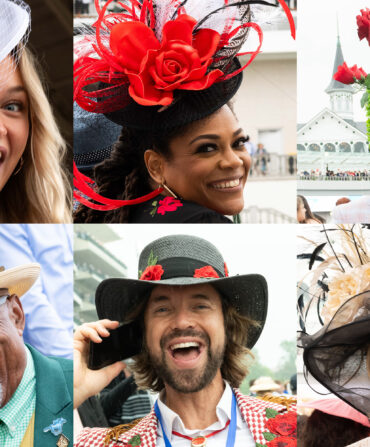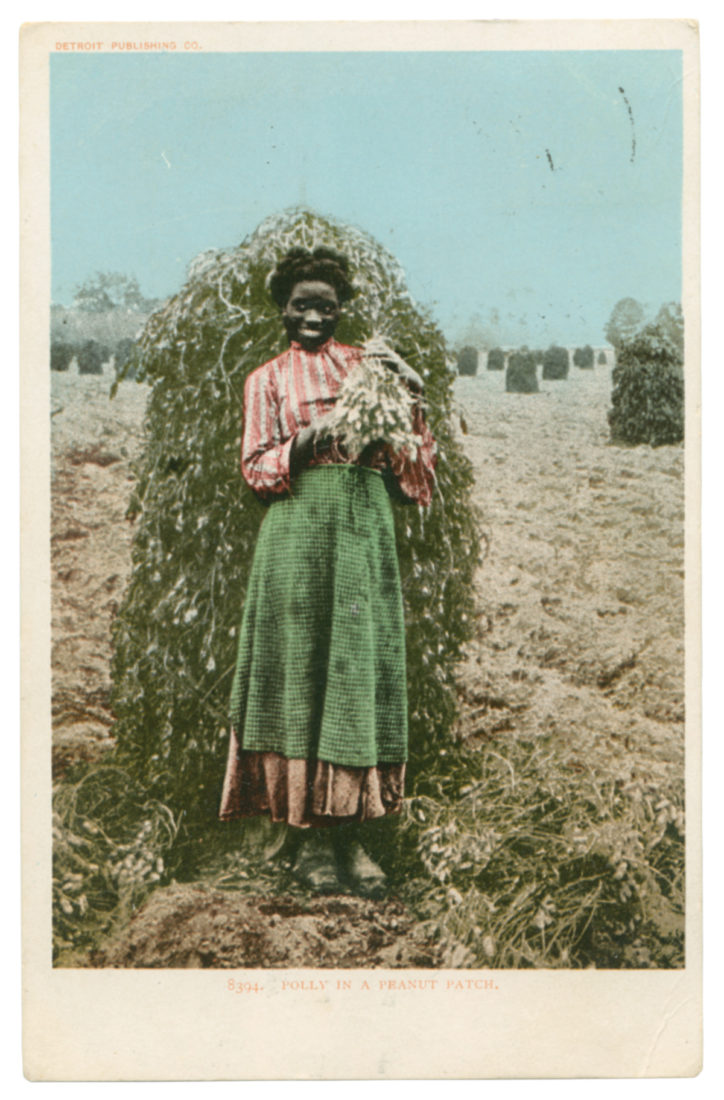
Polly in a Peanut Patch
“I like her smile; her clothing, certainly, is interesting; and the fact that it’s peanuts, a legume that is a part of the African culinary repertoire, even though it’s native to the New World,” Harris says. “There’s a whole lot that’s wrapped up in there. Plus, I’d never seen peanuts mounded up like that.” (Postcards can be hard to date, Harris explains, because you may buy one years, even decades, before you send it, though some do hold clues. This one was mailed in 1905.)
Photo: Courtesy of Jessica B. Harris
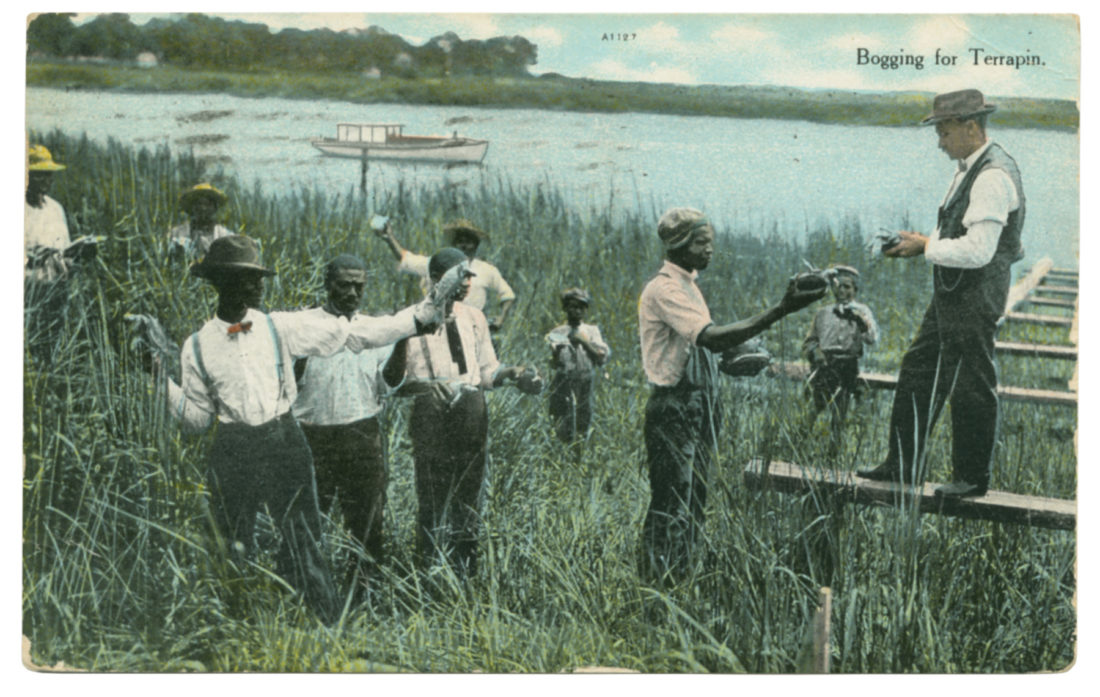
Bogging for Terrapin
The back of this postcard, mailed in 1911, says this scene took place at A. M. Barbee & Sons Terrapin Farm on the Isle of Hope in Savannah, Georgia. “We don’t eat terrapin anymore,” Harris says, “but it was popular at the time for dishes like terrapin stew, turtle soup made with terrapin. The other thing: Look at these gentlemen. They own ties and hats and suspenders. It’s sort of surprisingly formal. Photography at this point wasn’t point and click, so some of it may have been posed.”
Photo: Courtesy of Jessica B. Harris

Drawing the Seine at Ile of Palms, near Charleston, S. C.
This scene depicts the ancient practice of catching fish with a seine net, a cast net featuring both weights and floats. “The fishermen seem to be black,” Harris says, “and the others, although it’s not easy to see or determine, seem to be white and looking on. You can see the catch they’ve gathered there on the beach.”
Photo: Courtesy of Jessica B. Harris

Among the Orange Groves in Florida
“There are a series of cards with African Americans and oranges and grapefruits, and in some cases the fruit is oversized for effect,” Harris says. “But here, the young man looks natural, and the fruit, while a little exaggerated, does too.”
Photo: Courtesy of Jessica B. Harris
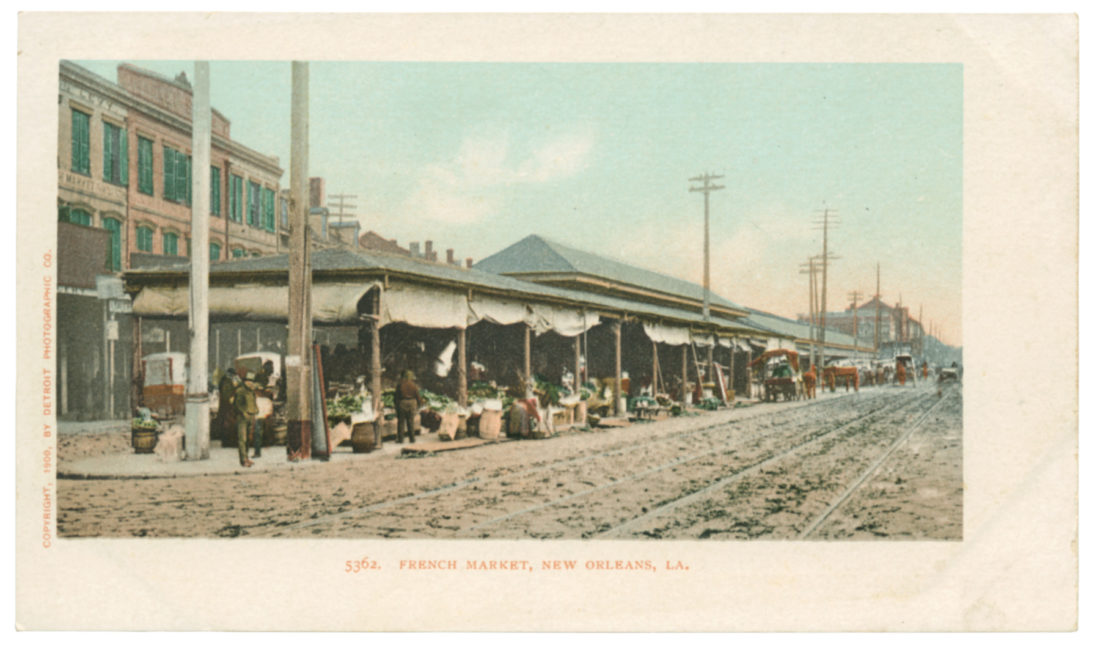
French Market, New Orleans, LA.
“I have a whole collection of just New Orleans cards,” says Harris, who owns a home in the city. “When I first went to New Orleans, there were wonderful used bookstores, and they always had a file box or two of postcards. I’d riffle through to see what I came up with. This card is particularly interesting because you can see the Mint in the background, which is still there.” Today, the Old U.S. Mint houses the New Orleans Jazz Museum.
Photo: Courtesy of Jessica B. Harris
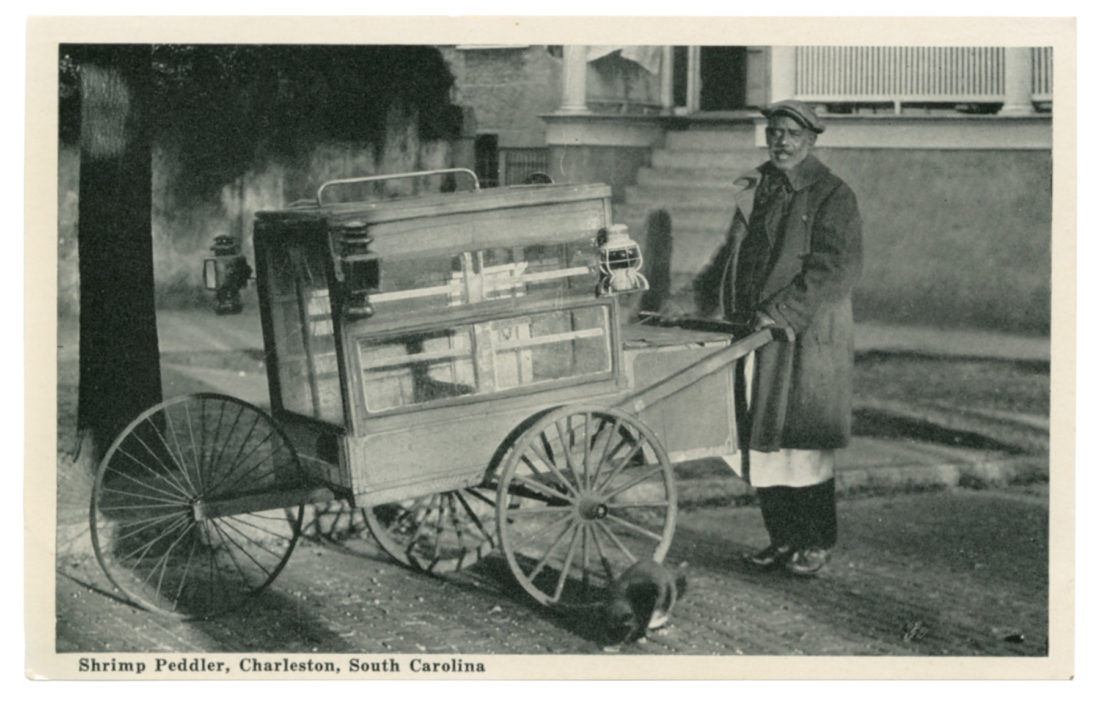
Shrimp Peddler, Charleston, South Carolina
“The cat would definitely be following the shrimp peddler,” Harris says of the creature in the foreground. “This was likely someone selling the shrimp already cooked, I would think—that chest could be for ice.”
Photo: Courtesy of Jessica B. Harris

Female Vegetable Vendors – An every morning scene on the Streets of Charleston, S. C.
“I like these women because they’re so sassy. She’s almost daring the photographer: Yeah, you take this picture.”
Photo: Courtesy of Jessica B. Harris

The Nu-Wray Inn, Burnsville, North Carolina
The back of this postcard describes this man as Will, “(The colored chef), bringing hickory-smoked hams from the century old smoke house. Hundreds of hams are cured each year by this old fashioned method and served daily in the Nu-Wray dining room.” Says Harris, “This was obviously a promotional card done by the Nu-Wray to promote their chef, and equally their smokehouse, and the kinds of things they would be serving. But also notice that the chef doesn’t have a last name, he’s just Will, the colored chef.” Built circa 1833, the Nu Wray Inn still operates today.
Photo: Courtesy of Jessica B. Harris
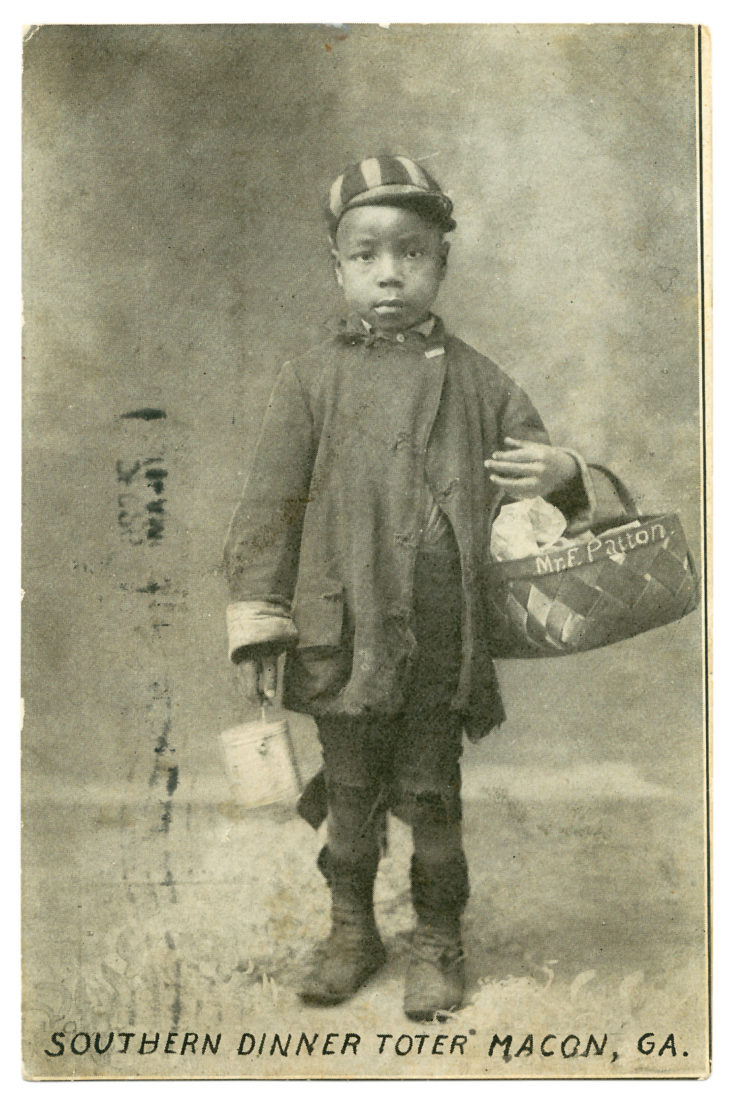
Southern Dinner Toter, Macon, GA.
This postcard and the one in the next slide were Harris’s two most recent purchases when writing the book. They both, she writes, “highlight a question that I, and indeed most who look at the cards have. What is the thing that the card is trying to explain or express?” Taken by the charm of the studio portrait and the “adorable serious-faced young boy with a basket over his arm and what appears to be a dinner pail in another,” Harris couldn’t help but wonder: Who was “Mr. F. Patton”? Was the little boy toting dinner for a parent? For work?
Photo: Courtesy of Jessica B. Harris

The Old Slave Block in the old St. Louis Hotel, New Orleans, La.
“The second card is more explicit,” Harris writes in the book. After the location, the card gives this information: The colored woman standing on the block was sold for $1,500.00 on this same block when a little girl. “The context is breathtakingly clear….That is what was missing from most of the other cards in my collection. Lacking the small print, it was impossible to do more than guess at the meaning of the cards: to enter into a dialogue with the cards.”
Photo: Courtesy of Jessica B. Harris



